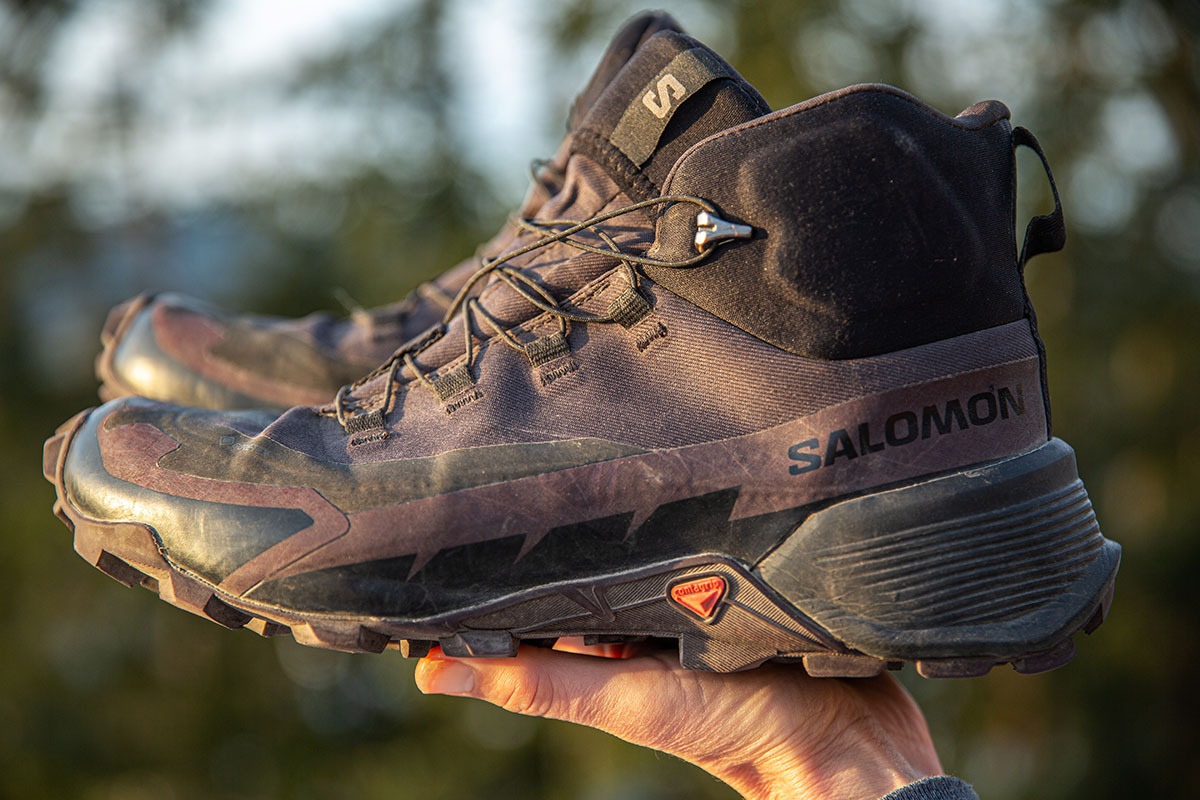
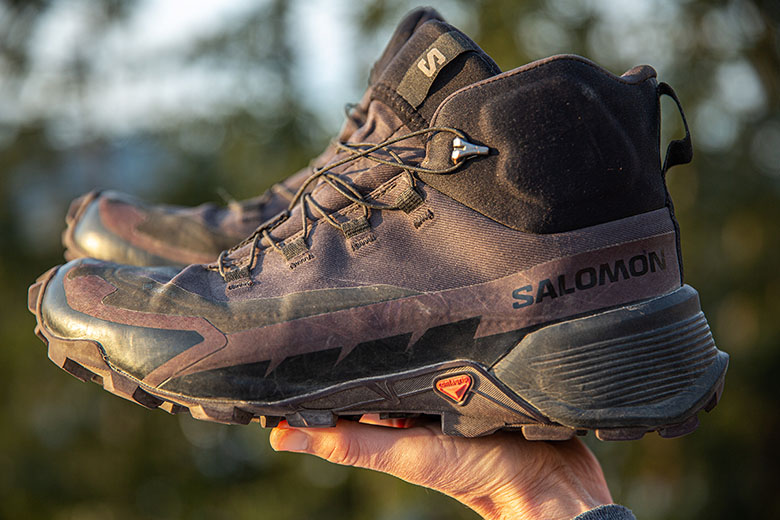
Price: $190
Weight: 1 lb. 9 oz. (women’s size 8.5)
Waterproof: Yes (Gore-Tex)
What we like: Running shoe-like feel and comfort with hiking boot levels of protection.
What we don’t: Subpar support and durability.
See the Women's Cross Hike 2 Mid GTX See the Men's Cross Hike 2 Mid GTX
Salomon’s hiking boot lineup is undeniably extensive, and their Cross Hike 2 Mid GTX offers an interesting mix of running shoe-like agility with ankle-height protection. I tested the original model a couple seasons back and recently took the latest “2” to Patagonia to see how it compared. The verdict: The boot is exceptionally nimble and sprightly—a nice match for done-in-a-day adventures—but still falls noticeably short in support and durability. Below we outline our experiences with the Cross Hike 2 Mid GTX. To see how it stacks up to the competition, see our articles on the best hiking boots and best women's hiking boots.
Like the original model, Salomon’s latest Cross Hike 2 Mid GTX was comfortable right out of the box with a very well-cushioned and running shoe-like feel. The boots required virtually zero break-in time, and I experienced no pressure points or blisters despite taking them directly onto a 15-mile hike over varied terrain (the seamless uppers helped a lot here). Further, the EVA insole is noticeably plush and padded—it felt bouncy on the trail—and the thick tongue and collar only add to the cushy feel. And despite a stack height that's 7 millimeters taller than the prior version (34.7mm at the heel and 24.7mm at the forefoot), the Cross Hike 2 never felt sloppy and kept my feet well isolated from rocks and roots below. Finally, the EnergyCell midsole has excellent energy return, and I’ve had no issues running short distances (although they wouldn’t be my first choice for days that involve more running than hiking). It all adds up to a highly responsive, flexible, and sprightly boot that feels much more like a running shoe than a traditional hiker.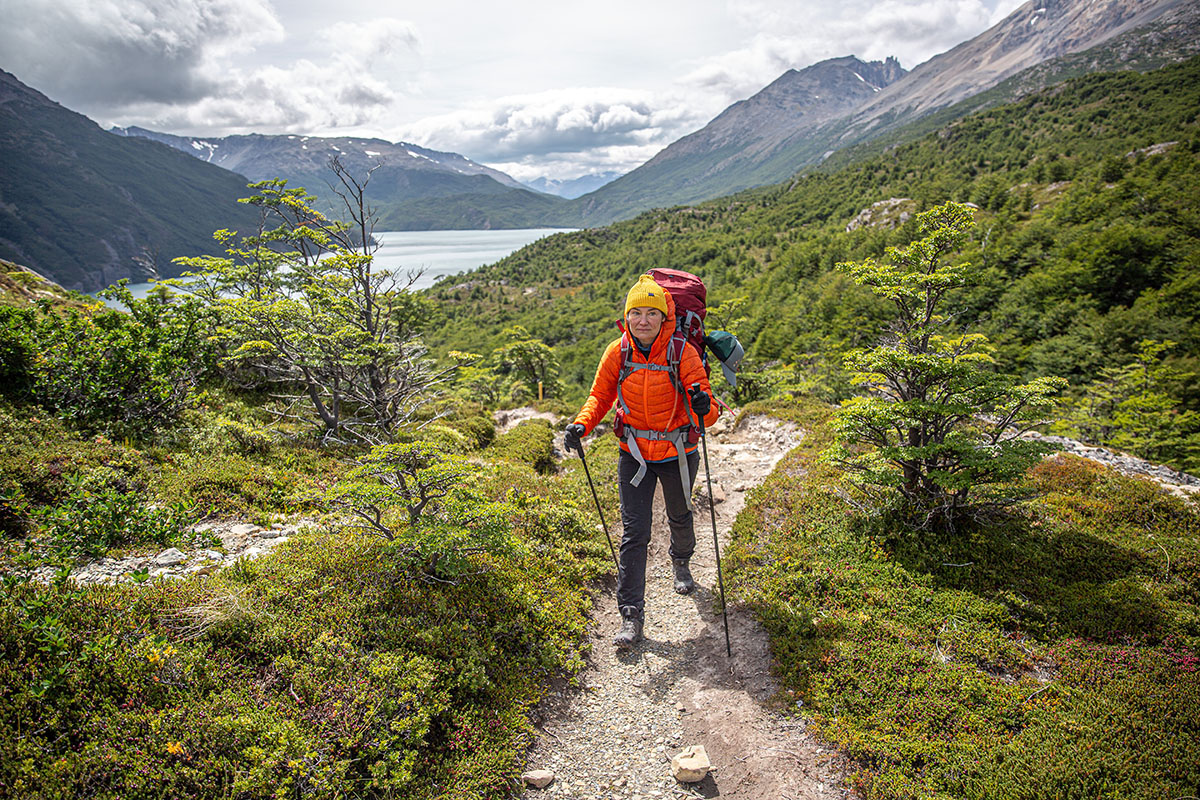
That said, like its predecessor, the Cross Hike 2 lacks an eyelet at the very top of the collar. Salomon did increase the height of the cuff during the recent update, but the boots still gape open and allow grit and pebbles to migrate inside. Pulling your hiking pants over the top of the boots or adding gaiters will alleviate the issue, but one more eyelet at the upper collar would greatly improve the design and be worth the slight weight penalty, in my opinion.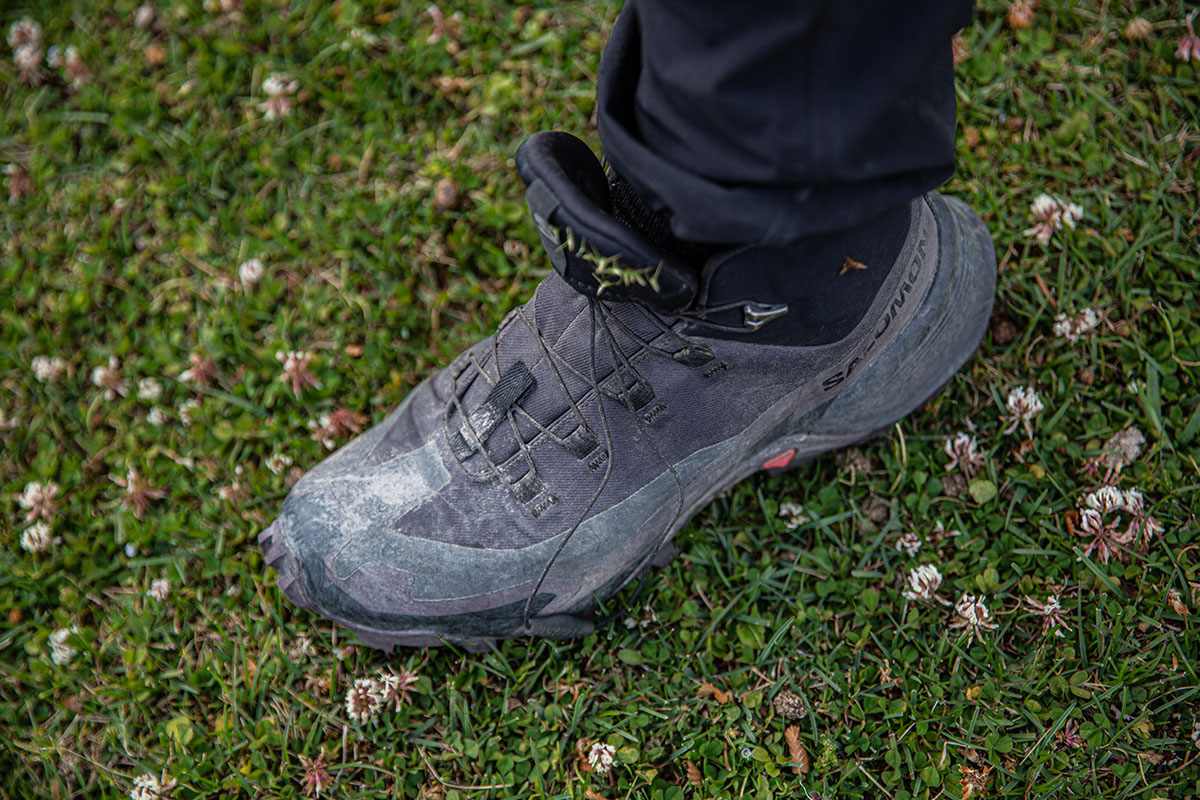
On my scale, the Salomon Cross Hike 2 Mid GTX checked in at 1 pound 9 ounces per pair for my women’s size 8.5 (it’s listed at 1 lb. 9.5 oz.), which puts it in the crosshairs of many top lightweight designs. Within Salomon’s own lineup, the boot splits the difference between their uber-popular X Ultra 4 Mid GTX (1 lb. 10.1 oz.) and trimmed-down OUTpulse Mid GTX (1 lb. 7.1 oz.). Other popular lightweight models, including Merrell’s Moab 3 Mid WP (2 lbs. 0.7 oz.) and KEEN’s Targhee III WP Mid (1 lb. 12.4 oz.), clock in heavier with more traditional hiking designs and substantial leather uppers. However, shaving weight often comes at the sacrifice of some durability, and I’ve experienced some premature delamination issues with both my original pair and newer Cross Hike 2s (more in “Build Quality and Durability” below). Again, they feel very light and nimble on the trail, but it’s important to be aware of that tradeoff.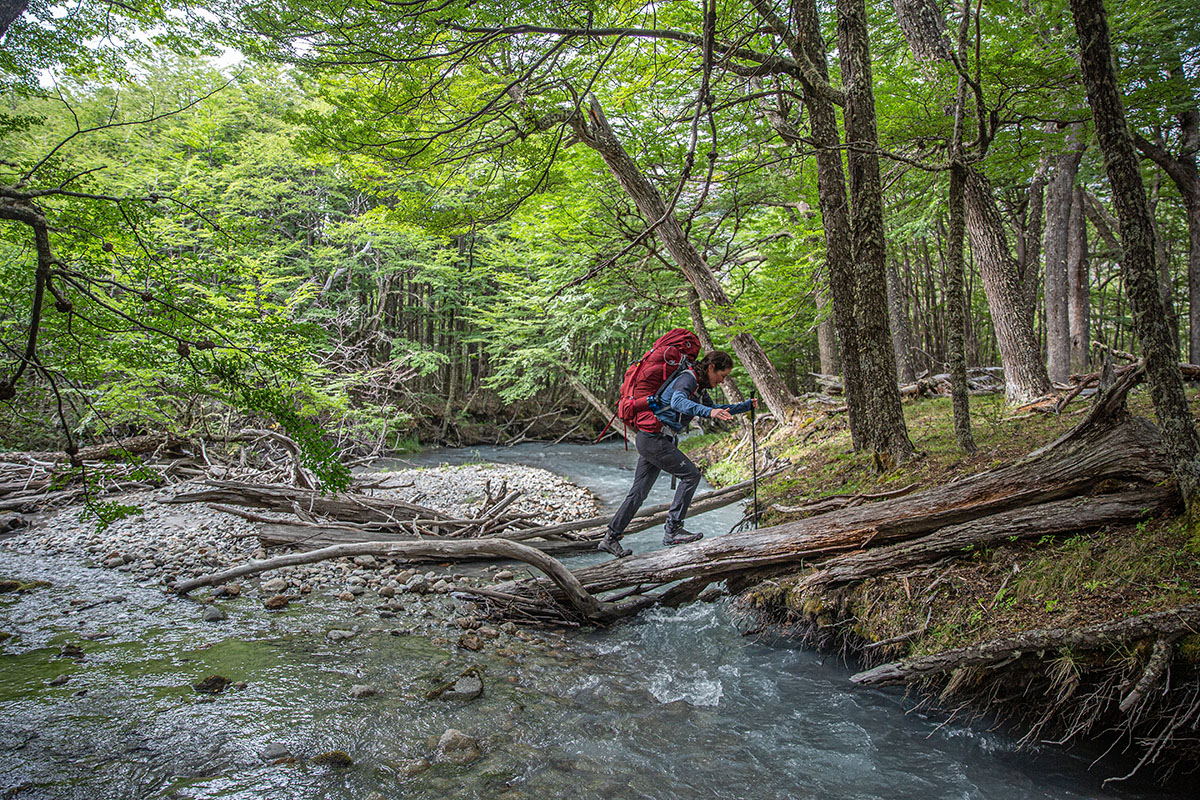
I’ll admit that I’m a bit of a diva when it comes to traction: I need to be able to trust my shoes or at least know how they will respond across variable terrain. I should also note that I experienced a good deal of slippage on wet surfaces—namely slick rocks and slimy boardwalks—in the past-generation Cross Hikes. That said, the latest model seems to be a sizable upgrade from its predecessor. In sum, Salomon retained the proven Contagrip outsole and deep, multidirectional tread but added more lugs and extended them farther over the toe box for added bite when ascending steep slopes. The result was confidence-inspiring traction over everything from slick slabs while boulder hopping to thick mud, tricky water crossings, and even wet logs. Truthfully, I don’t recall slipping once while wearing the boots—which is seriously high praise and a big improvement over the original design.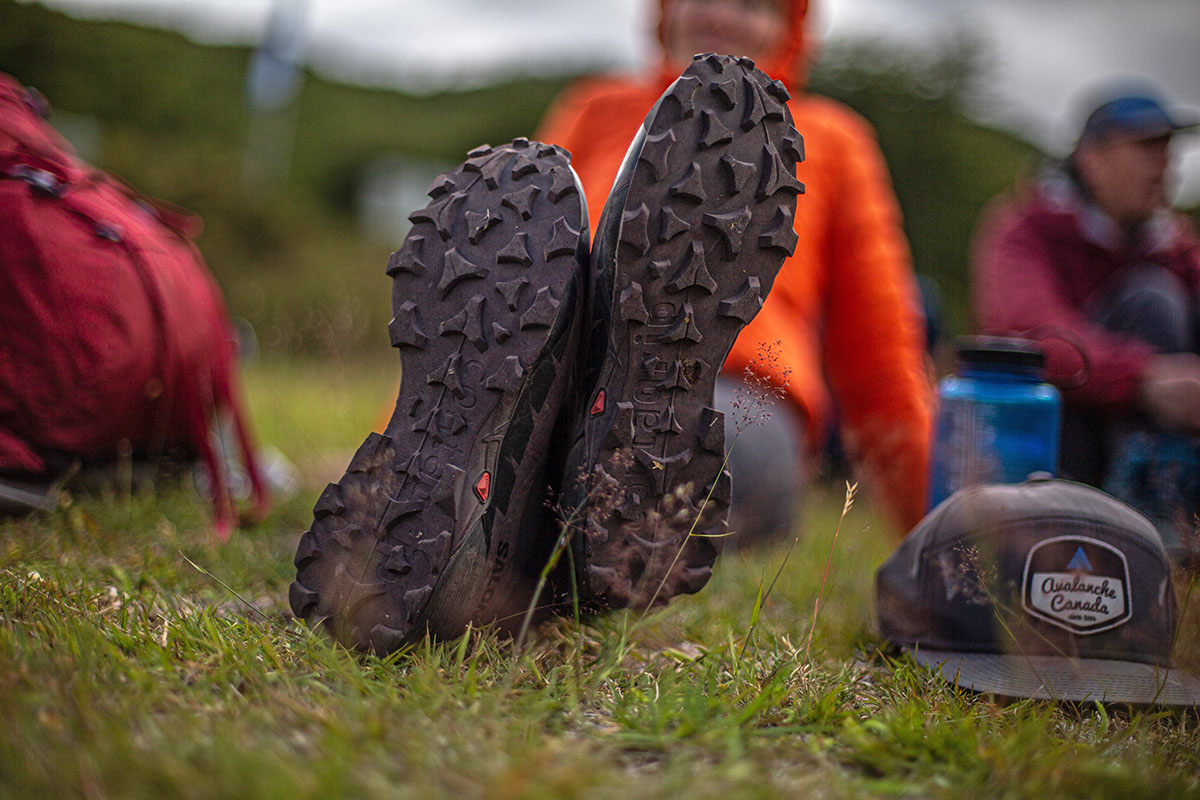
Support is another area where the Cross Hike 2 makes a few sacrifices. All told, I would categorize it as better than a trail runner but far less confidence-inspiring than a traditional hiking boot. The higher cut does provide decent protection from bumps and scrapes, but I don’t feel that it adds much stability. As I touched on above, this is partially due to the lack of an additional set of eyelets at the very top of the collar, which limits its ability to securely hold the ankle in place. To be fair, I didn’t experience any ankle rolls despite being loaded down by a full pack and crossing variable, challenging terrain in Patagonia, but hikers who prefer that locked-in feeling will probably feel insecure in the Cross Hike. On a related note, I found that the laces slip slightly over longer distances, allowing the foot to move around in the shoe even more (and requiring fairly frequent adjustments on the trail), but the Quicklace system is both quick and easy to snug up (more in “Fit and Sizing” below).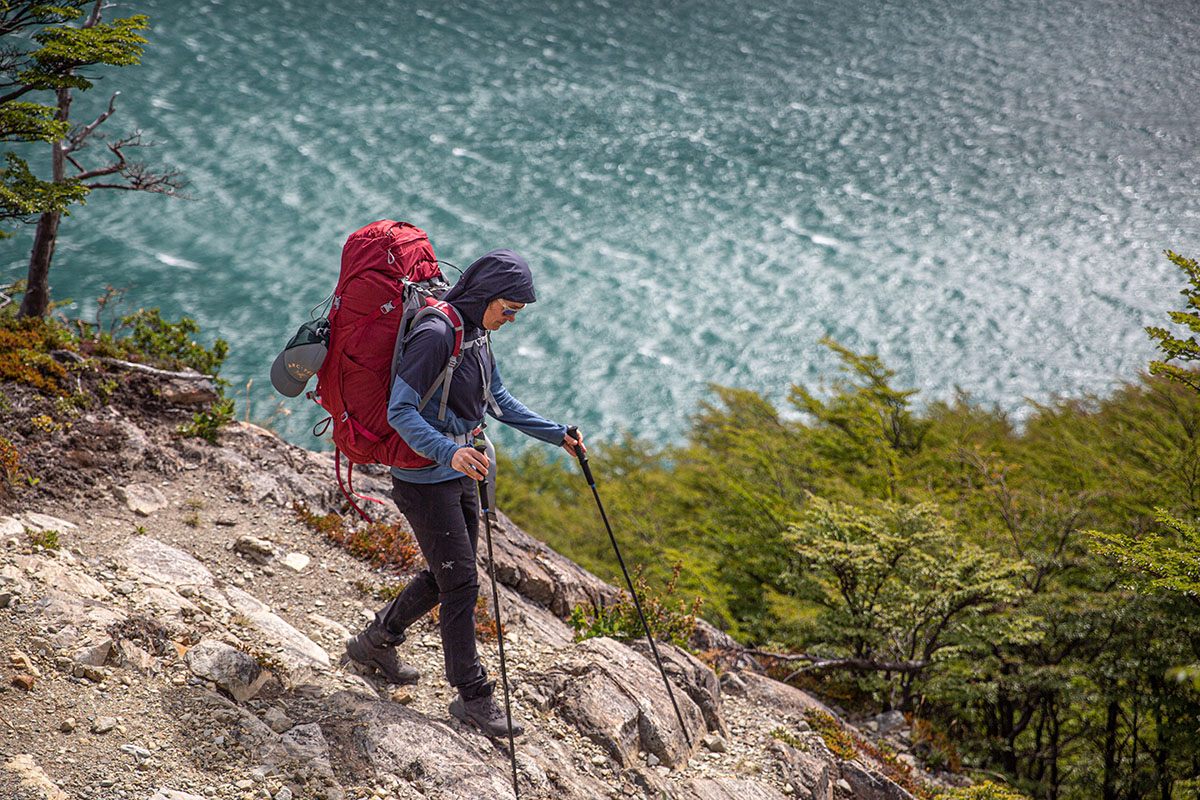
Gore-Tex-equipped hiking boots rarely disappoint from a waterproofing standpoint, and the Cross Hike 2 is no exception. Our trip to Patagonia was unseasonably wet, but the boots deftly fended off everything I threw their way. Even on dry days, our hikes involved muddy trails and semi-frequent water crossings, and the Gore-Tex construction and water-repellent treatment (along with the higher cut) provided good protection and coverage for stepping through puddles and crossing shallow streams.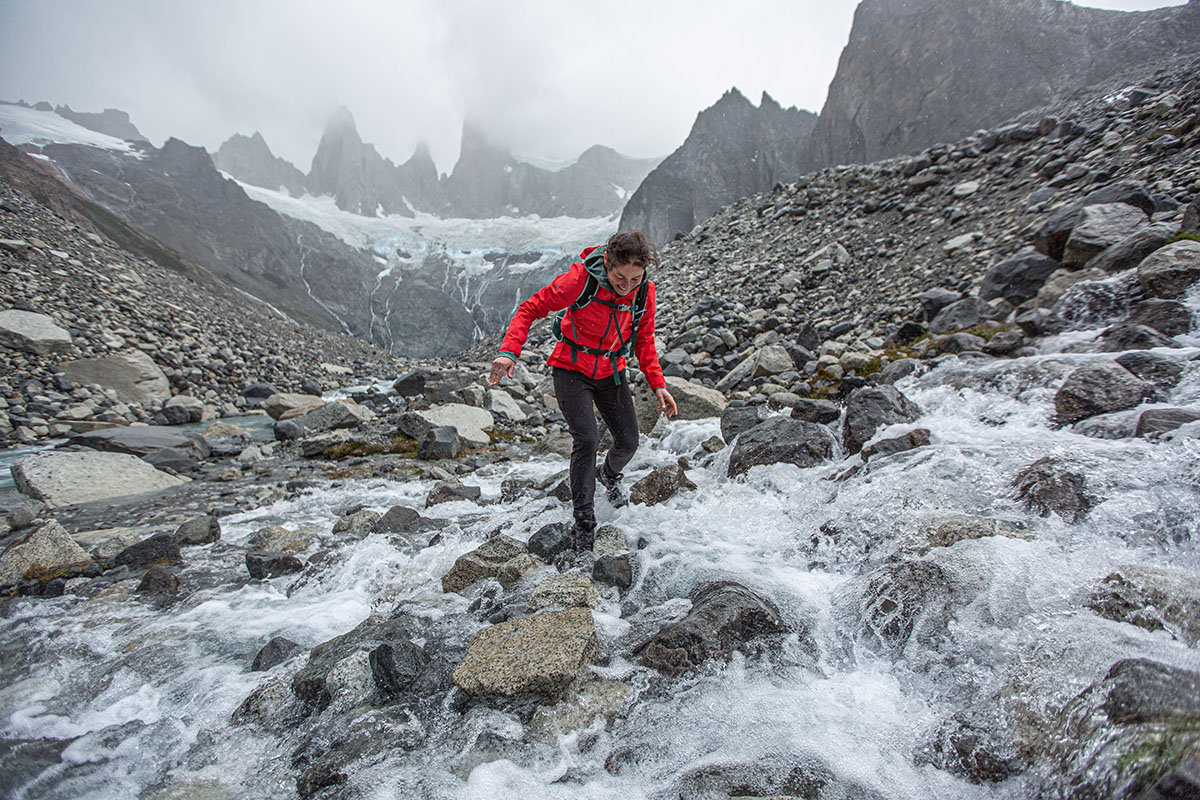
On follow-up winter hikes back home, the Cross Hike 2 kept my feet dry in shallow and hardpacked snow, but it was difficult to prevent moisture from entering over the top and accumulating between the tongue and ankle in deeper conditions. I wish Salomon had connected the tongue and cuff higher up (protection ends at the base of the ankle) to create a better seal, but pairing the boots with gaiters (or simply paying closer attention in snow and during water crossings) is a viable solution. And it’s worth noting that the shoes took a while to dry after that incident (non-waterproof models dry much quicker), but that’s an unavoidable downside if you need the water protection. A final inherent tradeoff is a drop in breathability, although the Cross Hike’s minimalist build translates to decent overall performance (like the X Ultra 4 Mid GTX and other lightweight waterproof designs, you can expect it to run warm in summer heat).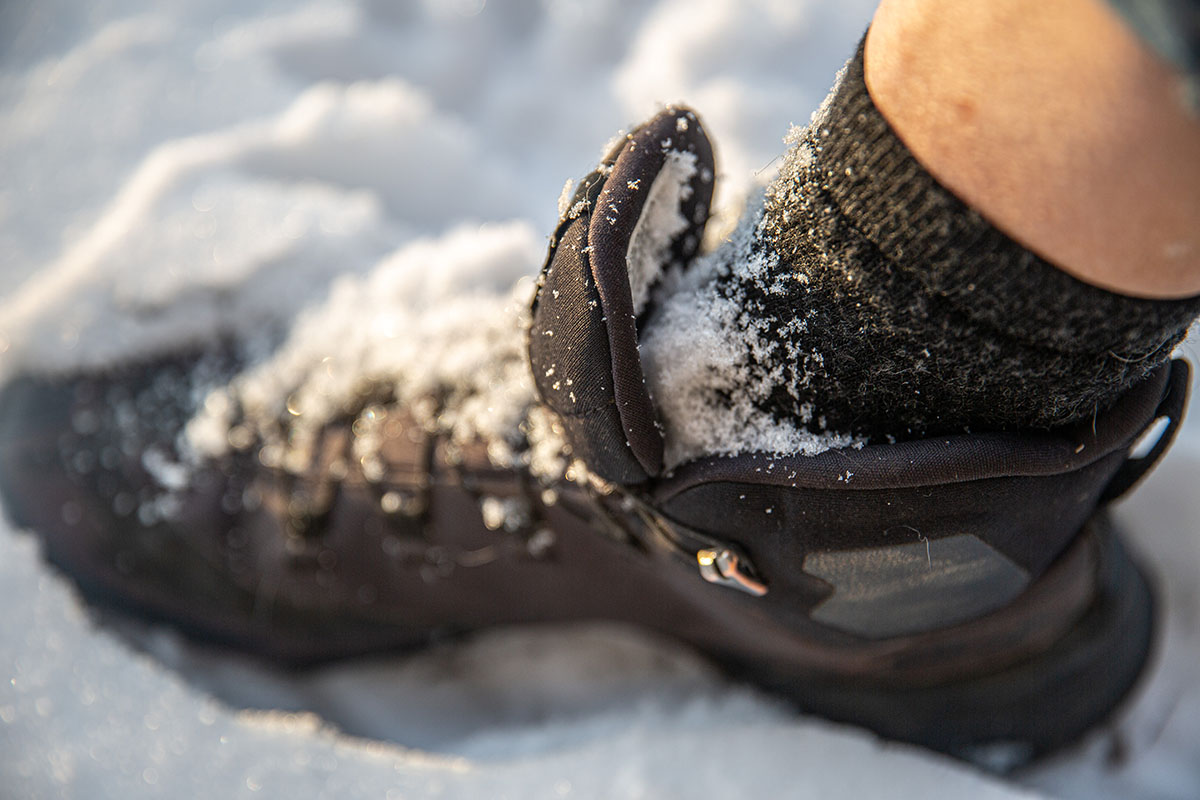
Salomon is a leader in the hiking footwear market and known for their well-made designs, so I was pretty surprised to experience premature durability issues with both the original Cross Hike and latest Cross Hike 2. With my original pair, a section of the upper material began to separate where the midfoot starts to flex after just a few outings, and it continued to peel away over time. With the new version, the toe cap has already started to separate on one shoe after minimal wear. This hasn’t affected the boot’s waterproofing yet, but it’s nevertheless disconcerting given how new (and expensive) the boots are. A smaller nitpick is that the laces are comically long and prone to migrating out of their pocket, which can lead to snagging. To be fair, they’re still holding up well, and the rest of the design is very well executed. But considering the other downsides I experienced—including the general lack of support—it feels like Salomon went a little too far in shaving weight.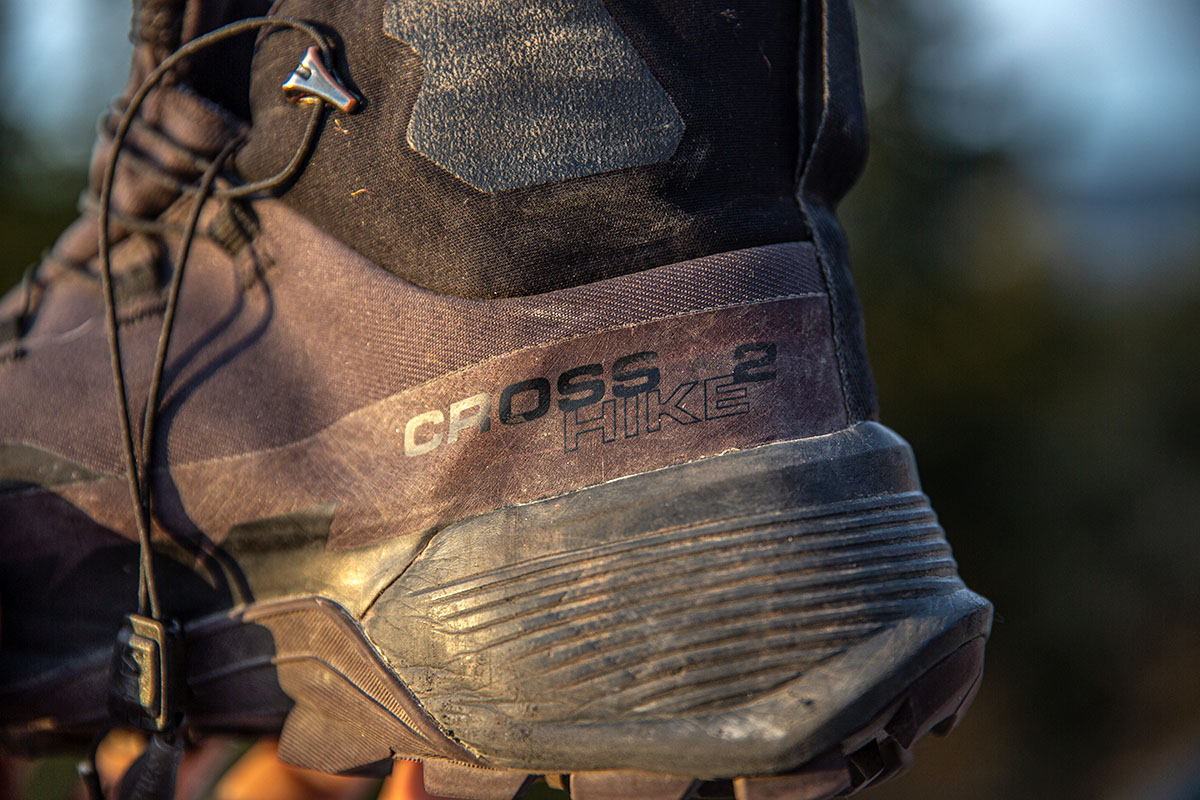
Salomon’s sizing can be a bit inconsistent at times, but I ordered my usual women’s 8.5 in the Cross Hike Mid 2 GTX and found that they fit true to size. They do appear to be a little longer than my original Cross Hikes, but the difference is very minimal. I would categorize the boots as slightly roomy in both length and width, but I experienced no slippage at the heel and appreciated the extra space at the toes to account for foot swelling after long days on the trail. And as I touched on above, I suffered no pressure points or hotspots, which typically indicate an area of noticeable tightness or looseness. Finally, the Quicklace system does make it harder to customize fit (standard laces allow you to tailor each area of the foot) and is prone to loosening throughout the day, but the design is easy to operate with one hand and convenient for making quick adjustments on the trail.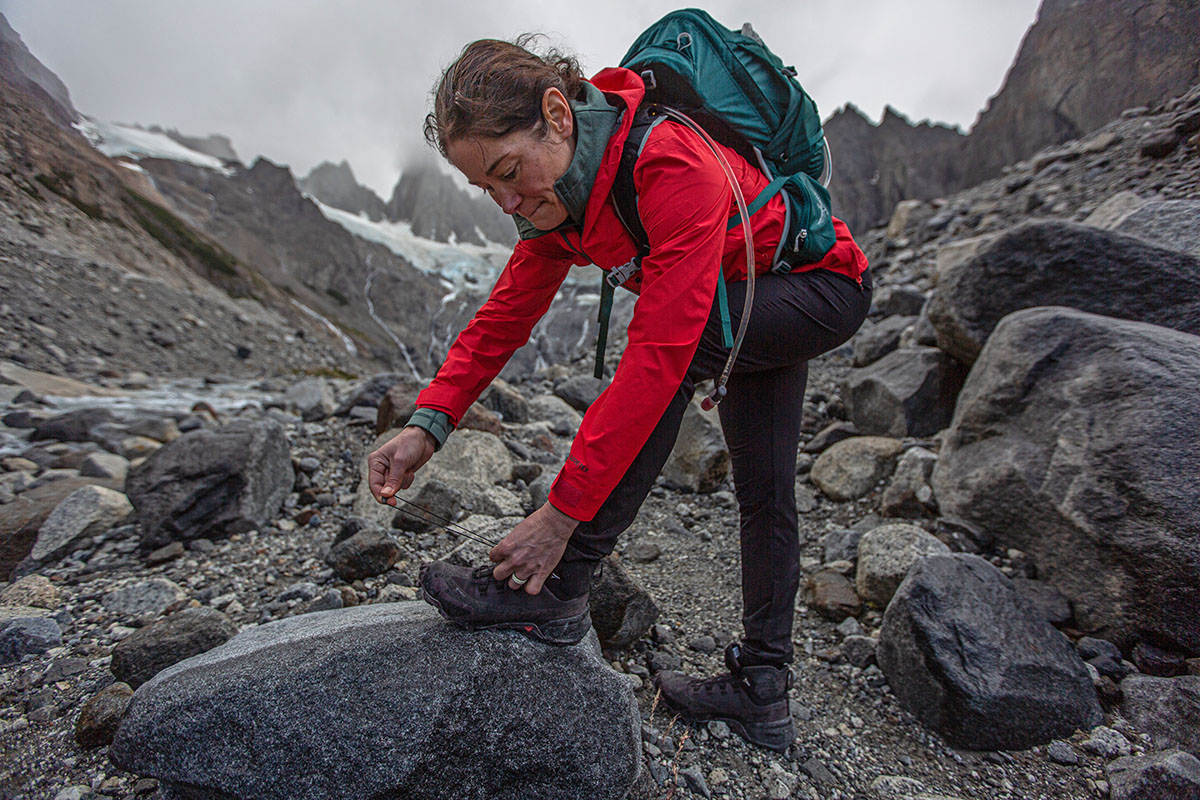
In 2023, many outdoor brands are putting a big focus on incorporating more sustainable production practices, and Salomon is no exception. In this case, the Cross Hike 2 Mid GTX utilizes a Gore-Tex membrane that’s PFC-free, meaning it forgoes the use of harmful perfluorocarbons. The boots also use materials made from recycled bottles and other material waste, although Salomon doesn’t specify which components are recycled. All told, these additions are a nice touch and only boost the boots’ all-around appeal.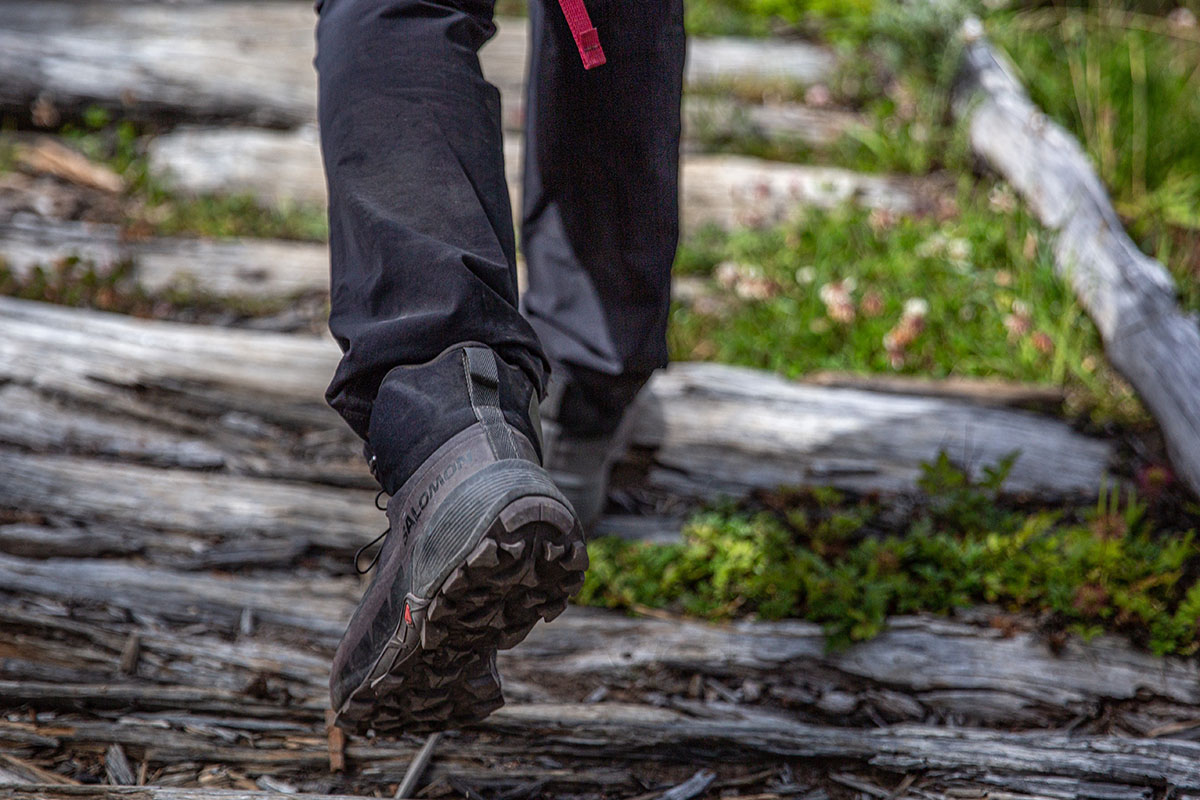
We put the women’s Cross Hike 2 Mid GTX through its paces for this review, and the collection also includes a men’s model. The men’s Cross Hike 2 Mid GTX retains an identical build and feature set to the women’s boot but is sold in different colorways and checks in slightly heavier at 1 pound 13.1 ounces per pair. Salomon also now sells both models in dedicated wide sizes for those with higher-volume feet, although we wish they still offered the design in a low-top version for those who don’t need the ankle coverage (there are also no non-waterproof options).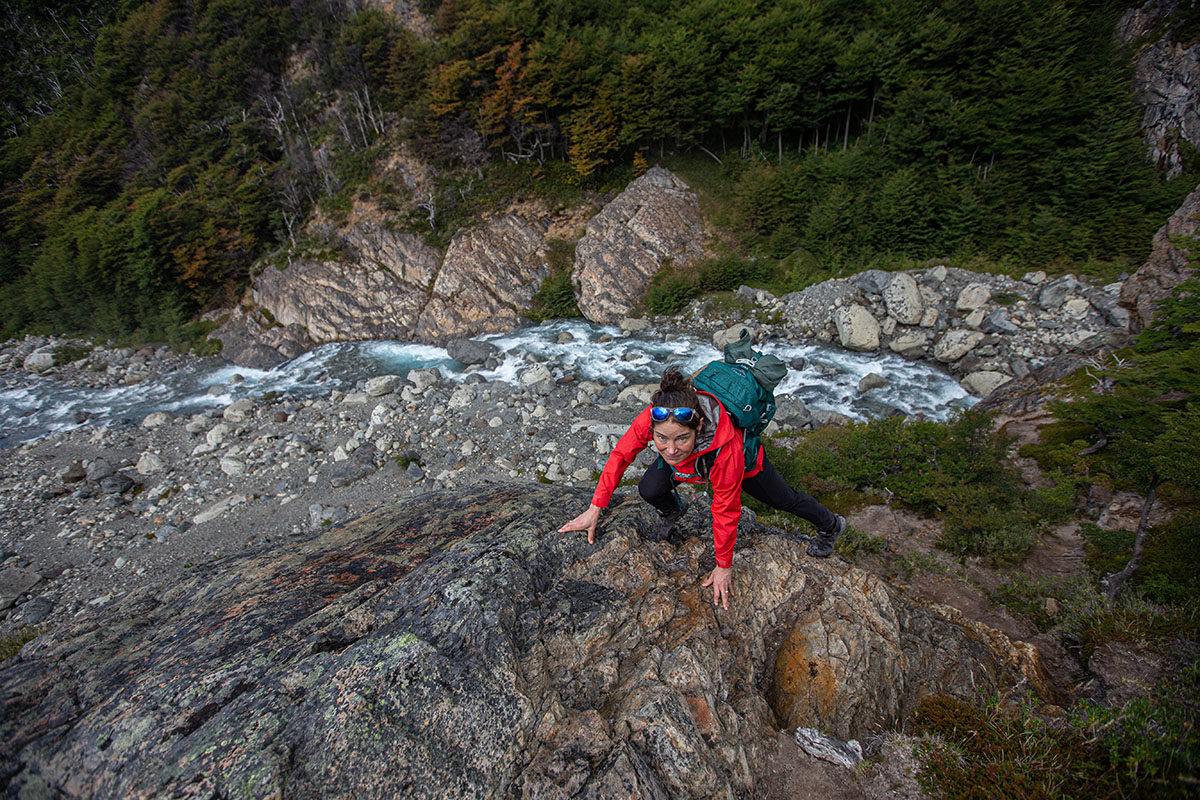
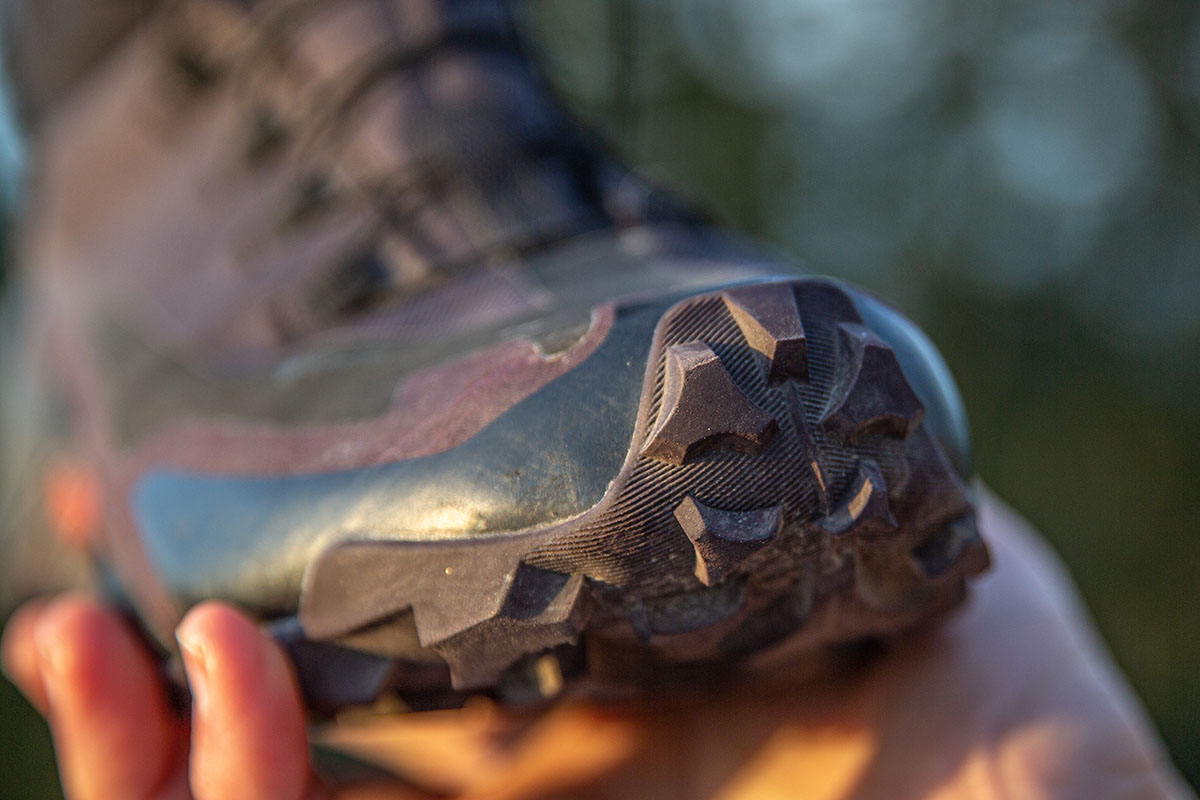
| Boot | Price | Category | Weight | Waterproof | Upper |
|---|---|---|---|---|---|
| Salomon Cross Hike 2 Mid GTX | $190 | Lightweight | 1 lb. 9.5 oz. | Yes (Gore-Tex) | Synthetic |
| Salomon X Ultra 4 Mid GTX | $175 | Lightweight | 1 lb. 10.1 oz. | Yes (Gore-Tex) | Leather / textile |
| Salomon OUTpulse Mid GTX | $160 | Lightweight | 1 lb. 7.1 oz. | Yes (Gore-Tex) | Synthetic |
| HOKA Anacapa 2 Mid GTX | $195 | Lightweight | 1 lb. 13.4 oz. | Yes (Gore-Tex) | Nubuck leather |
| Altra Lone Peak All-WTHR Mid 2 | $190 | Lightweight | 1 lb. 8 oz. | Yes (eVent) | Synthetic |
The Cross Hike 2 Mid GTX is an impressively light and agile hiking boot, but there are several other designs that we think better balance weight and durability. The first is Salomon’s own X Ultra 4 Mid GTX, which checks in a little heavier than the Cross Hike at 1 pound 10.1 ounces and is slightly less padded but otherwise outperforms the Cross Hike across the board. You get the same proven Gore-Tex waterproofing, responsive and cushy EnergyCell midsole, and grippy Contagrip rubber, but the X Ultra 4 has a noticeably solid look and feel that should stand up better to long-term use. We also like the X Ultra’s wing-like strap along the outside of the foot, which adds a nice dose of ankle security, and we prefer its traditional laces for customizing fit. In the end, the 1.1-ounce weight penalty is a small price to pay for such a noticeable bump in performance.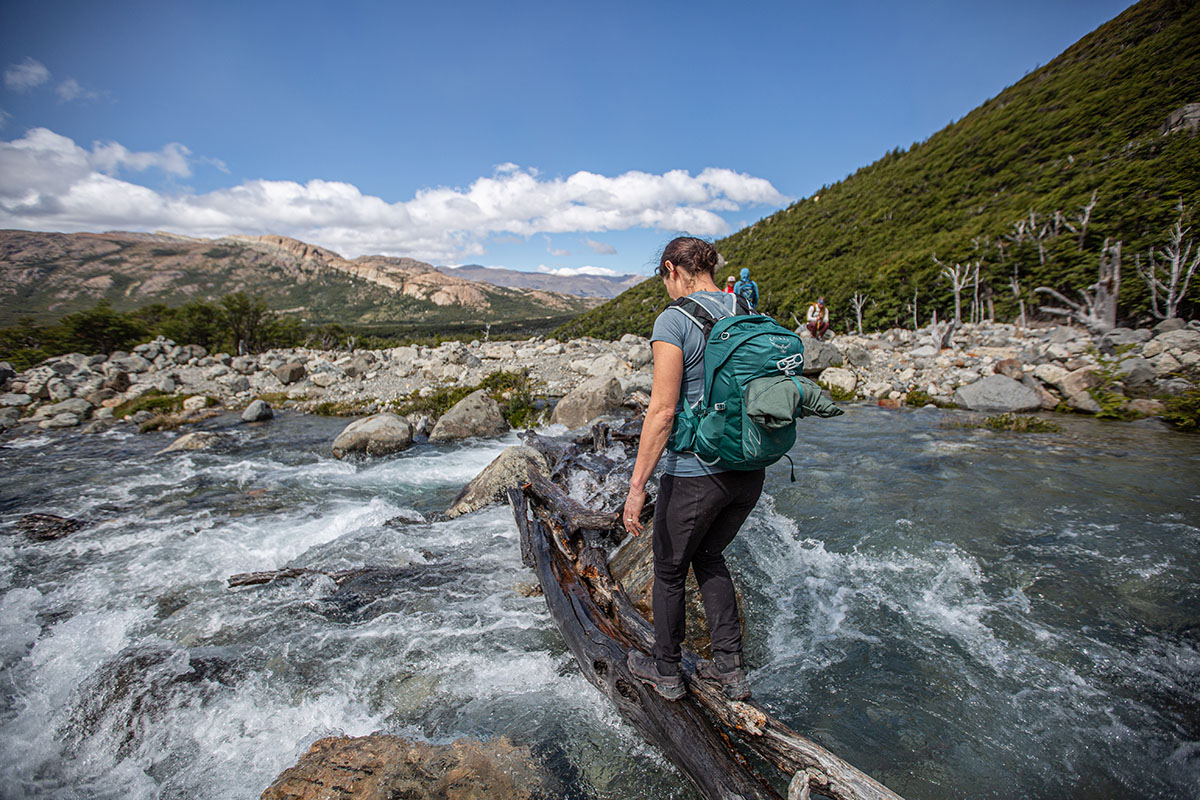
Next up is Salomon’s OUTpulse Mid GTX, which shares the Cross Hike’s running shoe-like feel, sleek looks, and ankle-height protection. You also get many of the same features, including a Gore-Tex membrane, Contagrip rubber, and flexible construction. Where do the two designs differ? Most notably, the OUTpulse will save $30 and around 2 ounces in weight, uses traditional laces rather than Quicklaces, has a less aggressive outsole, and isn't as cushioned underfoot. Neither boot is ideal for shuttling a heavy pack (they’re both a little sloppy and loose-feeling around the collar), and both suffered durability issues early into testing, which is largely due to their light and minimalist builds. In deciding between the two, the OUTpulse is best for day hikes and easier terrain (for more, see our OUTpulse review), while the Cross Hike excels over longer distances and in more challenging conditions.
Moving away from Salomon’s collection, trail running brand HOKA has made serious strides in the hiking market of late, and their Anacapa Mid 2 GTX impressed us with its light and well-cushioned build. Both boots cost around the same, feature Gore-Tex waterproofing, offer excellent comfort and generous padding, and feel like a running shoe but with added coverage and protection. Neither shoe is ideal for carrying a heavy pack or crossing challenging terrain, and the HOKA feels similarly compromised from a long-term durability standpoint, although it didn’t break down prematurely like the Cross Hike did. We also prefer the Anacapa’s more traditional lacing system for its better security and customization, although you do pay a small weight penalty. At the risk of sounding like a broken record, going this light clearly has its drawbacks, but we think HOKA pulled it off a little better than Salomon.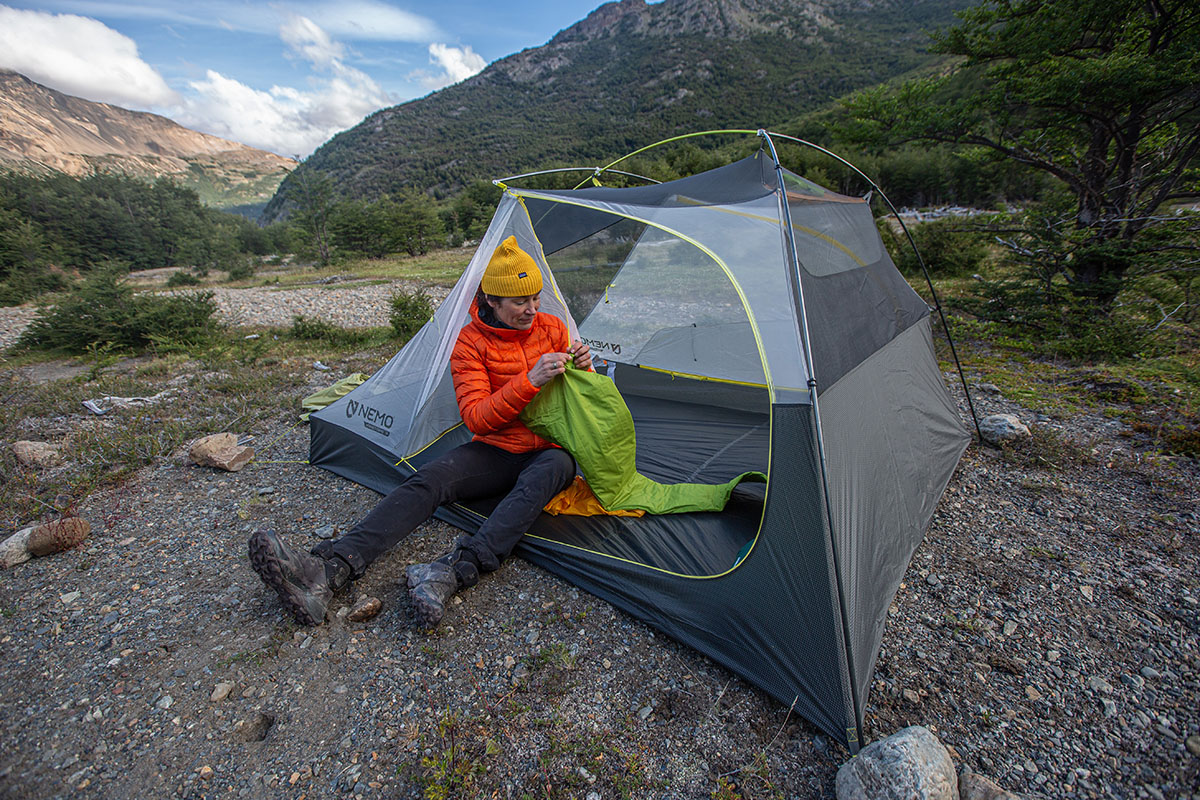
A final alternative to consider is Altra’s Lone Peak All-WTHR Mid 2, which is a mid-height variation of their flagship Lone Peak trail runner. The biggest news with the Lone Peak is Altra’s signature Balanced Cushioning platform (formerly called ZeroDrop), which is meant to mimic your natural foot position and means that your heel and forefoot are level with the ground. In other words, the Lone Peak offers a dramatically different feel than the Cross Hike 2, which has a 10-millimeter drop (this is largely a matter of personal preference). Another signature Altra feature is their wide toe box, which is designed to boost comfort but can make the boots feel sloppy and insecure over technical terrain. In the end, neither boot stands out for its protection or durability, and a final decision will likely come down to fit and feel.
If you’re thinking about buying gear that we’ve reviewed on Switchback Travel, you can help support us in the process. Just click on any of the seller links above, and if you make a purchase, we receive a small percentage of the transaction. The cost of the product is the same to you but this helps us continue to test and write about outdoor gear. Thanks and we appreciate your support!
Depending on the seller, most products ship free in the United States on orders of $50 or more. International shipping availability and rates vary by seller. The pricing information on this page is updated hourly but we are not responsible for inaccuracies.